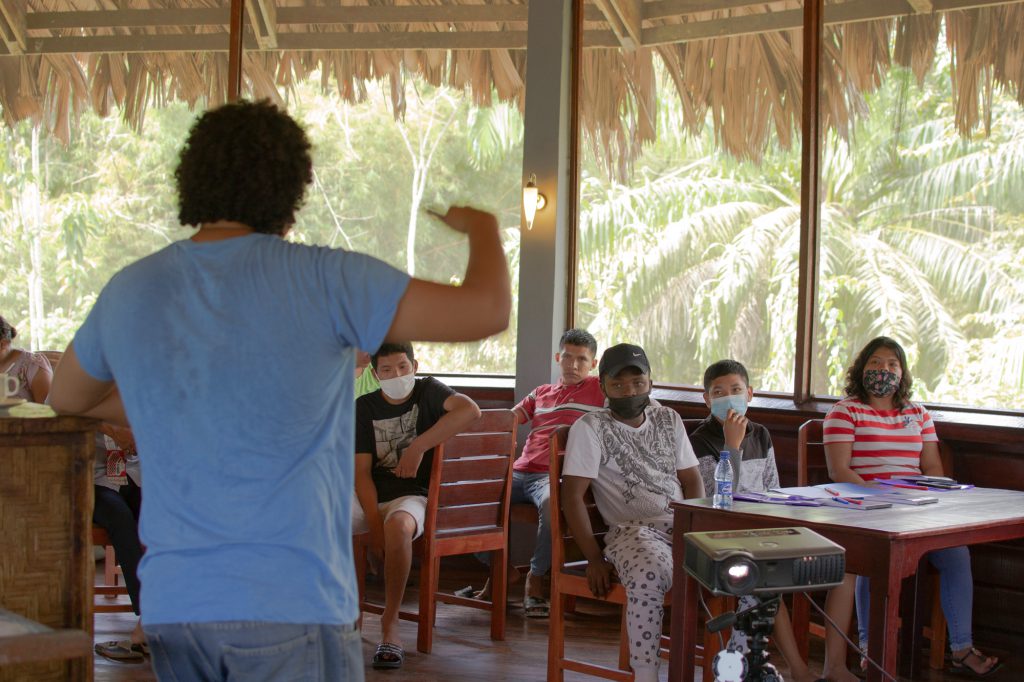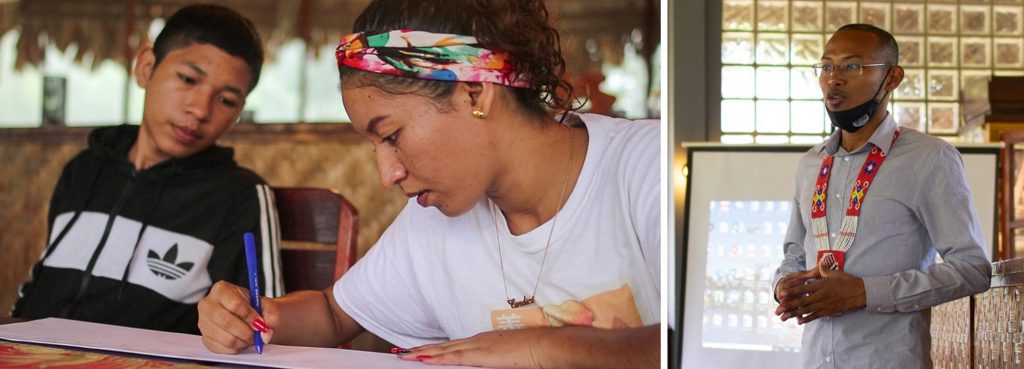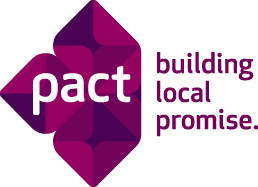At 21, Robin Sabajo has seen it time and again among his peers in their village of Matta, in northern Suriname: Faced with many challenges – no nearby high schools to offer educational opportunities, the need to economically contribute to their households, and much more – Matta’s indigenous youth fall into drugs and alcohol.
He felt like his hands were tied. What can one young person do to overcome such complex social problems?
Indigenous peoples in Suriname represent less than 5% of the population but are distributed in a forest area that covers more than 94% of the total country’s surface area. Given this, virtual channels are one big opportunity to make visible the challenges of youth as well as indigenous peoples generally in Matta.
With funding from USAID, Pact and its partner, the Association of Indigenous Village Leaders in Suriname (VIDS), organized a communications workshop for youth called Set a link fu kraka makandra (Establishing a link for mutual support), as part of Pact’s project Strengthening the Capacity of Indigenous Organizations in the Amazon (SCIOA). The workshop, held in August, trained eight indigenous youth from the villages of Galibi, Erowarte, Matta and Bernharddorp, giving them the skills to speak up about the challenges they constantly face.

During the workshop, participants learned how to tell stories with a camera, how to write the ideal story and how social media can assist in linking with various target groups. Participants also discussed issues they face as indigenous youth and tried to find solutions to raise their voices locally and nationally.

“We want to make the youth more aware of the role they have in giving the indigenous a stronger voice in Suriname and in the world. They should realize the importance of their heritage. Otherwise, I fear that the challenges of the indigenous in Suriname will no longer be on the local and international agendas,» said Margriet Biswane – Toemere chief of Alfonsdorp in the district of Marowijne, the village where the workshop was held.

After the workshop, Candice Zschuschen, 21, from Bernharddorp, agreed to write for the VIDS’ Indigenous magazine Maraka, working on a page specifically to inform and link indigenous youth. Gianni Pane, 14, wants to make a short film about the jobs in which youth end up when they are not able to study. Idris Fredison, 29, youth coordinator for the VIDS, created a Facebook page where young people are starting to upload videos to receive online feedback from their peers.
Like these youth in Suriname, indigenous youth in other participating countries of SCIOA, such as Brazil and Colombia, are developing diverse activities to be empowered and to better advocate for the rights of their communities and territories.
Youth are not only the future leaders of their communities but also key agents of knowledge transfer.
“Now that I have learned how to use my skills to make a video about this problem,” said Pane, “I will definitely invite my friends to learn and to make one together.”

